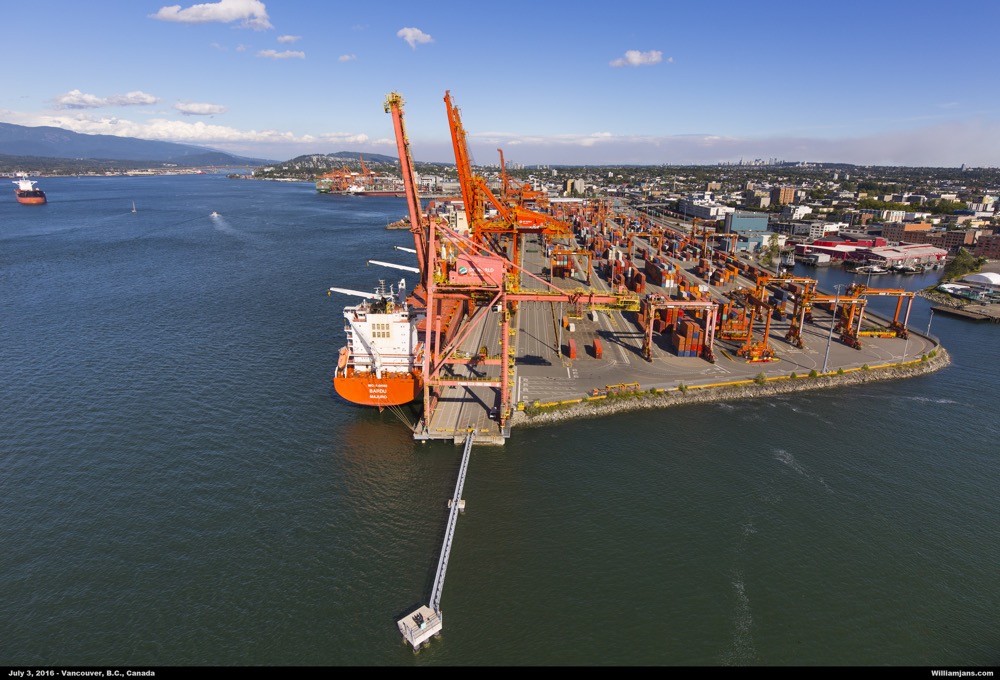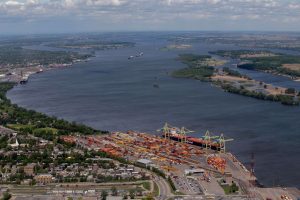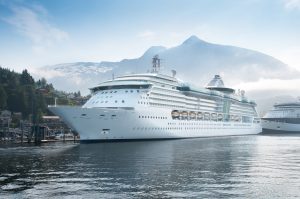Despite the ongoing pandemic and global supply chain challenges, as well as extreme weather events in B.C., 2021 cargo volumes through the Port of Vancouver increased by 1% from 145 to 146 million metric tonnes (MMT) over 2020.
“Vancouver’s port community met challenge after challenge in 2021—sometimes working around the clock—to keep the port connected to national supply chains and goods flowing for Canadians,” said Robin Silvester, president and CEO of the Vancouver Fraser Port Authority, the federal agency mandated to enable Canada’s trade through the Port of Vancouver. “I’d like to recognize and thank industry and the workforce across the port for their exceptional work moving goods through Canada’s largest port in another complex year.”
In 2021, record container and foreign bulk volumes, as well as strong grain volumes in the first half of 2021, helped maintain cargo volumes through the port, despite a challenging trade landscape and the continued federal deferral of cruise in Canada due to COVID-19.
Following eight consecutive years of record grain volumes and a 2021 mid-year record of grain shipped through the port, 2021 grain volumes declined by 13% over 2020 after a drought in Western Canada diminished Canadian grain production for the latter half of the year. Port terminals mitigated volume reductions by drawing down and shipping stored grain, ending the year with the second-highest annual grain volume in the port’s history.
Declines were seen in sectors such as fertilizers (down 13%), chemicals (down 19%), lumber (down 14%), wood pulp (down 20%), and processed food products (down 22%), due to a combination of global supply chain challenges and weather events.
Continuing a long-term growth trend in container trade, shipping container quantities moved through the port reached a record 3.7 million TEUs (twenty-foot equivalent units) in 2021, an increase of 6% compared to the previous year.
“The 2021 container story, while a record for the fifth year in a row, is a warning on two fronts: a looming container capacity shortage and the Lower Mainland’s industrial land shortage crisis,” Mr. Silvester said.
Container trade through Canada’s west coast has been growing at an average of 5% per year for the last decade, in line with the high case of forecasted growth. With continued growth, west coast terminals are expected to run out of capacity by the mid-to late-2020s. To meet increased demand for goods shipped in containers, the port authority has been leading the Roberts Bank Terminal 2 Project, a proposed container terminal in Delta, B.C. The proposed project—which would be funded by the port authority and private investment—would increase container capacity on the west coast by 30% and has been designed to incrementally deliver a total of 2.4 million TEUs of capacity at the Port of Vancouver, delivering critical supply chain capacity and resilience. The project is pending a decision by the federal government before it can proceed.
“Globally-based supply-chain problems that Canadians are experiencing now are a preview of made-in-Canada supply-chain problems that are heading our way in a few years if, as a country, we don’t deliver urgently needed container terminal capacity,” Mr. Silvester said. “That’s why the port authority is leading the Roberts Bank Terminal 2 Project under our public-interest mandate, leveraging more than a decade of experience delivering high-quality, sustainable, forward-looking infrastructure projects for Canada and local communities. This project would be foundational to Canada’s trade future, but if we don’t act, it’s ours to lose—and those impacts will be felt from the west coast to the Prairies to Ontario and beyond, for many years to come.”
Another challenge highlighted by 2021 container trade statistics was an increase in exports of empty containers. Global market dynamics created a rush to return empty containers to ports in Asia to accommodate strong consumer demand in North America for containerized imports. This created real challenges for Canadian exporters, who were unable to access the empty containers that are usually in circulation to move their cargo. More supply chain capacity, enabled by sufficient industrial land across the port region, would help alleviate the congestion pressures on the supply chain created by demand surges and unexpected disruptions, while creating more flexibility and options for shippers to reach critical export markets.
“International demand for Canadian goods remains high, so this is a missed opportunity for Canada for additional exports,” Mr. Silvester said. “A central challenge we’re facing is the Lower Mainland’s industrial land crisis, which has squeezed key supply chain activities such as transloading and container storage out of the region. Having those functions close at hand supports a more resilient supply chain and facilitates Canadian exports.” (Photo VFPA)








